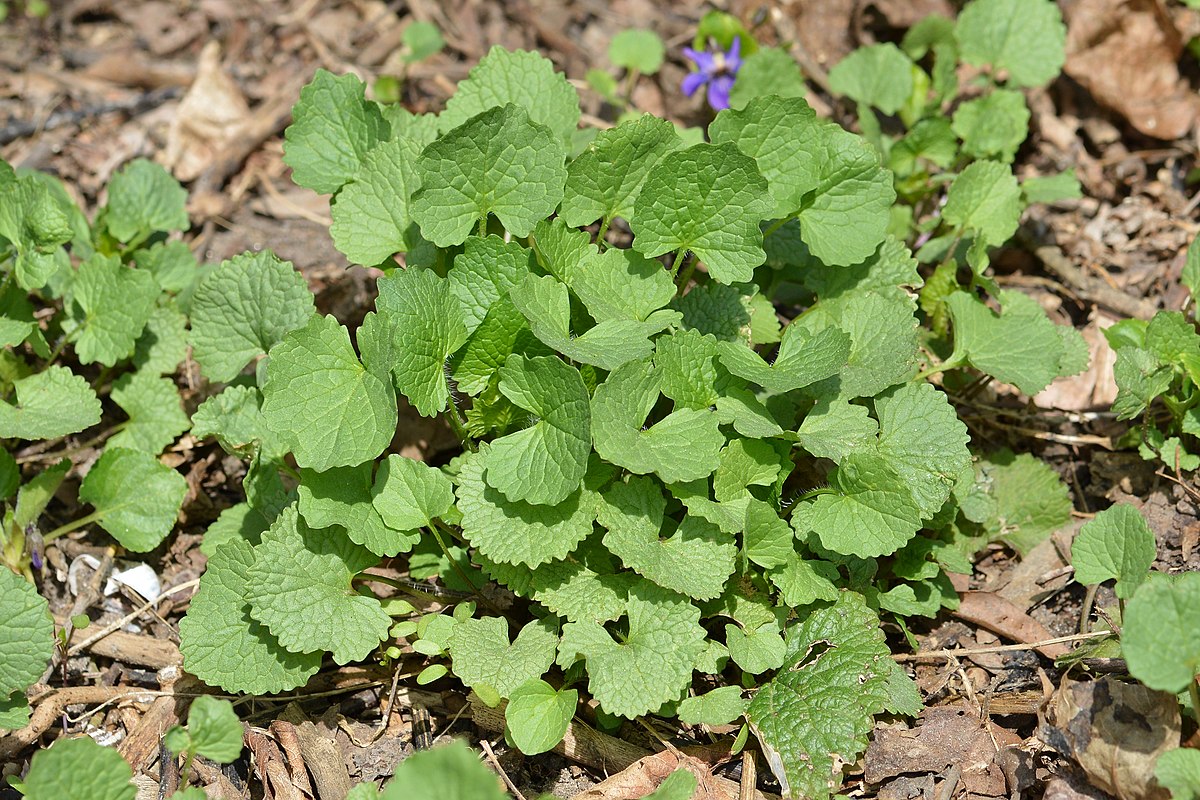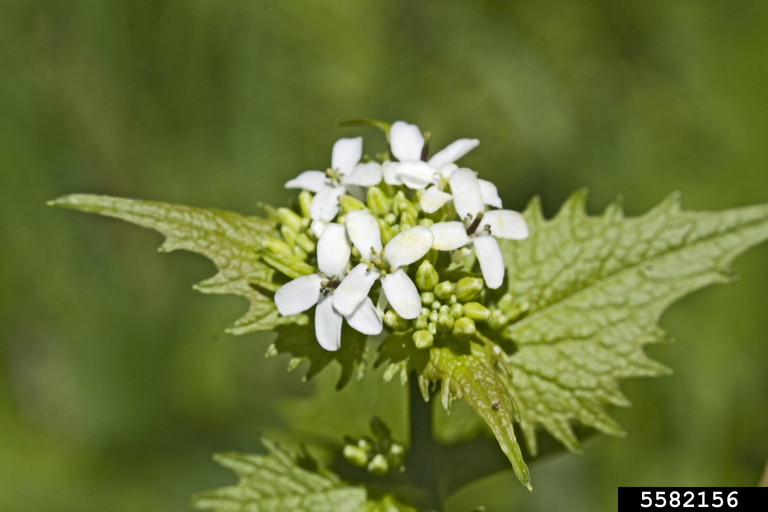Garlic Mustard

Garlic Mustard
(Alliaria petiolata)
Priority: - Prevent / EDRR
Tags: Terrestrial
Identification and Reproduction
Identification:
- Garlic mustard is a biennial flowering plant in the Brassicaceae (mustard) family.
- Stems grow from 30 to 90 cm tall, with little branching. They are smooth with sparsely spaced hairs.
- Rosettes will start dark green and the leaves will have scalloped edges and are heart-shaped. With maturity leaves are arranged alternately, toothed and more triangular in shape.
- Flowers are clustered at the end of stems, white and consist of 4 small petals. Blooms occur in early spring.
Reproduction:
- This weed spreads by seed and can self-pollinate.
- It is a prolific seed producer, a stand can produce more than 62,000 seeds per square meter.
- It is a self fertile, meaning that a single plant can occupy a site and produce its own seed bank.
- Seeds are long lasting; viable for up to 10 years.
- Seeds are also very small and easily dispersed by animals, people, equipment, vehicles and sometimes through water passages.
Habitat & Ecology
- Garlic mustard thrives in a wide range of soils, sun, shade and moisture.
- Typically it grows in wet soils near creeks or on steep slopes.
- This plant is commonly found along disturbed areas. They are often observed along animal migratory trails and hiking trails.
Impacts
Social:
- This plant is a nuisance for dairy farmers as it alters the taste of the milk produced, adding a garlic flavour.
Ecological:
- Quickly spreads through the forest understory.
- Since it spreads during the early spring it crowds out invasive species such as trilliums, violets, wild ginger and tree seedlings.
- It is not eaten by local wildlife or insects.
- Has allelopathic properties, inhibiting the growth of other plants and mychorrizal fungi which is required for healthy tree growth and seedling survival.
Management
Preventative measures should be in place.
- Garlic mustard is difficult to manage and fully eradicate once it has established a stand. It is crucial to identify new infestations and monitor sites.
- Do not plant garlic mustard in your garden.
- If you think you have seen this plant pease report it.
Mechanical/Manual Control:
- Hand-pulling is effective for small patches of garlic mustard. Ensure that entire root systems are removed and that any flowering plants are discarded in the garbage.
- Treatments will need to occur annually until the seedbank is depleted.
- After removal thoroughly clean boots, clothes and equipment before leaving the site to minimize the risk of transporting seeds.
- Prior to seedset success may be found in cutting the plant to ground level to prevent further dispersal.
Resources
For further details on Garlic Mustard control please refer to the Metro Vancouver Best Management Practices for Garlic Mustard (pg. 13-21)
Download the Metro Vancouver Factsheet on Garlic Mustard here.
Download the BC Invasive Species Alert! on Garlic Mustard here.
Check out this video made by the Ontario's Invading Species Awareness Program to help identify Garlic Mustard.
Download the Ontario Ministry of Natural Resources' Best Management Practices for Garlic Mustard here.
Header photo (Ryan Hodnett).





